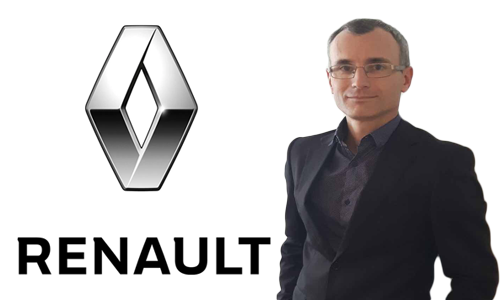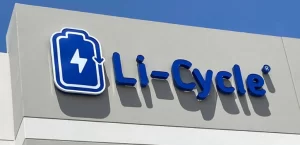By ICM Staff
Geneva, Switzerland — Sept. 6, 2019 — To raise awareness for the ICM’s upcoming International Congress for Battery Recycling ICBR 2019– to be held in Lyon, France, from September 18 – 20, 2019–the organization conducted an interview with Jean-Denis Curt, a recycling and circular economy manager at Renault to discuss the future of recycling and the circular economy.
ICM: Mr. Curt, the automotive industry is divided over which drivetrain system will gain the upper hand in the future. Some people are convinced the way forward is electric mobility, others that fuel cell-powered cars will win the day. What is Renault’s strategy?
Jean-Denis Curt: As a pioneer and one of the leaders of electric mobility, Renault remains convinced that battery electric and electrified vehicles will play a major role in the transition to low-carbon automotive transport. These technologies will be widely deployed across our product range and are likely to represent a significant proportion of Renault’s total vehicle sales in the near future. The market for fuel cell-powered cars will probably remain more limited in the short term but could well be boosted in the longer term by a combination of new technological developments and supportive public policies.
For the time being, our line of thinking is that fuel cell technology is best suited to meet the specific needs of niche segments such as the light utility vehicle fleets that require an extended driving range. Renault is already present on this market in the form of the Kangoo H2 Range Extender version, which is based on Symbio fuel cell technology and is being produced at a number of our plants.
ICM: You intend to talk about “resource-efficient mobility” at ICBR 2019. What do you mean by that?
Curt: More than 90 million cars and utility vehicles are produced worldwide by the automotive industry every year, requiring millions of tons of raw materials. Huge amounts of fossil resources are also burnt to power a billion vehicles that are currently on the world’s roads. That number could rise to two billion by 2050. Based on current trends, the volume of natural resources required to maintain our living standards on a sustainable basis may exceed the actual volume of natural resources available on our planet more than twofold. What is clear is that the human need for mobility will keep growing steadily. In its aim to fulfill this legitimate need, the automotive industry must be aware of its responsibility to do so in a way that is sustainable in the long run.
Renault sees both electric mobility and circular economy as key factors in rising to what is probably the greatest challenge that our industry has ever faced. Electric mobility is an essential step towards low-carbon and fossil-fuel-free transportation. At the same time, by applying the principles of circular economy at all stages of the vehicle’s life cycle we can achieve a more efficient and sustainable use of raw materials. Electric mobility and circular economy are also absolutely complimentary given the need for strategic materials-such as cobalt for EV batteries-in the transition to electric mobility and the importance of not losing these precious and limited resources at the end of a vehicle’s life.
ICM: What role can the use of recyclable materials play in this?
Curt: The use of recyclable materials is just one, albeit a key aspect of implementing a circular economy. The simple fact is that we will always need materials to produce cars and recycling enables us to use the same materials multiple times rather than constantly extracting new ones from the earth and dumping them at the end of the product’s life-cycle as is the case with the traditional linear economic model.
Renault cars currently sold in Europe already contain around 36 percent of recycled materials and between 10 and 20 percent of recycled plastics. We are currently focusing our efforts on increasing our usage of recycled plastics, fully aware that progress in such a technically challenging matter will not happen by itself unless we proactively guide the supply chain in the right direction. Our objective is to increase the amount of recycled plastics used by Groupe Renault worldwide in 2022 by 50 percent compared to 2013 to around 60 thousand tons per annum, mainly by expanding their usage to non-European countries (such as China, India or South America) where they are not as yet extensively used by the automotive industry, and within Europe, by increasing usage in new applications previously inaccessible for recycled plastics.
The new ZOE, for instance, will feature for the first time visible parts made of 100 percent recycled plastics as well as seat fabric partly made of waste safety belts. The reuse of recycled materials such as cobalt or nickel in new EV batteries will also be one of our priorities in the future.
ICM: What concrete measures is Renault taking to promote a circular economy?
Curt: Our circular economy strategy goes far beyond using recycled materials in our vehicles. It is based on a unique circular ecosystem that was first devised some 10 years ago by Renault Environnement, a subsidiary specifically set up for this purpose. The adopted strategy involves multiple areas of action such as the closed loop recycling of materials collected from end-of-life vehicles, the reuse or remanufacturing of automotive parts or the repair, reconditioning, second life and recycling of EV batteries.
ICM: The goal of reducing CO2 emissions seems to have top priority in the automotive industry. Isn’t it therefore more likely that car manufacturers will turn to composite materials that are lightweight and help reduce CO2 emissions rather than materials that are recyclable but heavy?
Curt: Yes, they probably will and, although I hate to say it, in most cases it will be the right decision, in that it will help minimise the vehicle’s environmental footprint over its life cycle. This is particularly the case for internal combustion engine vehicles-which still represent the vast majority of vehicle sales-given that the usage phase (including fuel production) usually accounts for around 80 percent of a vehicle’s environmental footprint. That said, it would not justify giving up on the use of recycled and recyclable materials in our new vehicles. More to the point, it is incumbent on us to continue the trend while at the same time reducing CO2 emissions. We are therefore calling on automotive material suppliers to develop new lightweight materials produced out of recycled and recyclable materials, and we are willing to collaborate with them to this end, just as we did when developing the recycled seat fabric and visible plastic parts used in the new ZOE.
For more information on the ICM, visit its website.
—-
Correction: This article was erroneously posted under the byline of ARC executive director Steve Fletcher, a regular contributor to Canadian Auto Recycler. Media Matters apologizes for the mistake.





















